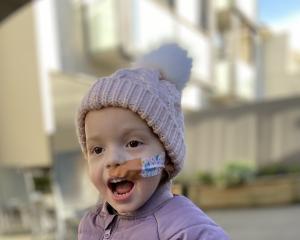
A massive collection of stone tools found near the mouth of the Waitaki River more than 50 years ago could shed light on life in the days of the colonisation of New Zealand.
The North Otago Museum's Willetts Collection numbers more than 9000 items. Now, it is the subject of a research project that could last two years, as University of Otago director of Southern Pacific archaeological research Prof Richard Walter leads a team looking into the ``very, very, significant collection'' that represents ``probably first or second generation'' people in New Zealand.
Prof Walter said the first stage of the project, cataloguing the nearly 10,000 stone tools uncovered in a 30ha area, was likely to reinforce the belief that New Zealand stone tool makers were among the world's best at the time.
Once all the tools were inventoried, bigger questions could be asked about "the colonisation phase in New Zealand''.
"It's understanding what's actually happening here in the first generations: where people are living; why; how they are communicating with each other; what sort of economic practices are taking place; how are the manufacturing industries developing.'' Prof Walter said.
"There are a lot of other sites this age, but this is one of the largest sites of this generation in the country.
"It's one of a handful of very big ones.''
Recent work in the area had shown the initial understanding of how Polynesians colonised New Zealand was incorrect. Stone from across New Zealand appearing in sites showed a sophisticated trading network was established early in the 14th century as people began to arrive on New Zealand's shores.
"We had always assumed in the past that the first generation was very, very small and dispersed, but in fact it looks like the first generation settlers were quite well-equipped, skilled and they lived in quite dense settlements,'' Prof Walter said.
"We see now the 14th century, particularly the first half of the 14th century, as being the colonisation phase, so I want to know what industries were taking place, the stone tool industry and the manner in which material was being moved around the country, because it's all linked to the colonisation process, in some way the exchange networks and mobility, the movement of people, that we can trace through the movement of stone.
"We know colonisation was effective, and successful, but we really want to know what was going on in the first decades of New Zealand civilisation.''
Museum director Jane Macknight said previously the most comprehensive study of the artefacts, which had been at the museum since 1996, was a report completed by Marianne Turner in 1997.
She said the project would raise the cultural value of the collection, but she was ``really excited'' it would be a collaborative project between the university, the museum, Te Runanga o Ngai Tahu and Waitaha Taiwhenua O Waitaki Trust.
"There are a few people who know it's tremendously significant. But as Richard [Prof Walter] said, `We don't know what we don't know.'
"It's an opportunity to bring an array of perspectives in.''
An oral history programme at the museum would be refocused to support the project and connect oral traditions to the scientific research.
Waitaha Trust chairwoman Anne Te Maiharoa-Dodds said the way the tools were uncovered in the 1950s intrigued her.
"When it was ploughed, when the furrow turned over the soil, all the artefacts were laying there,'' she said. ``It makes you wonder why. It was just under the surface. It must have been placed there, but why would they have it all laid out in a huge pattern?''
Kaihautu of Te Te Runanga o Moeraki Mary Anne Tipa said she was inspired by Prof Walter's passion for the project, which she called ``really quite special'' and said a better understanding of the past could have an impact on future generations.














